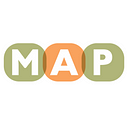EDUCATION & ACTION DURING COVID-19 SERIES
Supporting LGBTQ Youth
Even before the pandemic, LGBTQ youth were at greater risk for family rejection, homelessness, and discrimination.

The public health threat of COVID-19 has shown us now, more than ever, the importance of mutual aid and community care. As part of our commitment to speed equality and opportunity for all, MAP will be publishing a series of posts that advance the conversation around vulnerable communities who may be particularly at risk to the effects of the virus and the economic downturn. In the middle of an unprecedented global pandemic that affects us all, this series will shed light on the particular challenges facing all of our communities, as well as resources from partners and allied organizations to support you through the pandemic.
This spring, K-12 schools and universities across the country suspended in-class instruction to curb the spread of COVID-19. While children and young people adjust to remote instruction that may continue through the fall academic term, many advocates are worried about youth experiencing increased anxiety and stress, especially those youth who are LGBTQ. LGBTQ youth may find themselves isolated from peers and supportive teachers, cut off from programs like GSAs, and spending more time with their families to whom they may not be “out” or may be unsupportive.
Nationally, there are approximately 3.2 million LGBTQ youth between the ages of eight and 18, more than half of whom (52%) are youth of color, according to research by the Williams Institute. LGBTQ youth’s experiences at home, at school, and in their communities are often fraught. Even before the pandemic, LGBTQ youth were at greater risk for family rejection, homelessness, and discrimination:
- According to The Trevor Project’s survey of more than 34,000 LGBTQ youth, only 68% disclosed their sexual orientation to their parents and 51% disclosed their gender identity.
- Findings from a review of sexual minority literature finds that one-third of LGBTQ youth experience parental acceptance, one-third experience rejection, and one-third hide their identities for safety reasons.
- In a study of white and Latinx LGB youth, those who reported high levels of parental rejection were eight times more likely to report attempting suicide and six times more likely to report high levels of depression. Transgender youth are also at a greater risk for attempted suicide, depression, and anxiety, according to a 2018 meta-analysis.
- Nationally, 20% of youth experiencing homelessness identifies as LGBTQ, despite comprising 7–9% of the youth population.
- LGBTQ students who attend schools with GSAs or have supportive teachers are more likely to thrive in schools, according to research by GLSEN. Without access to these supports, LGBTQ youth may be particularly isolated during the pandemic.
COVID-19 has limited LGBTQ youth’s access to peers, teachers, supportive administrators, and community programs such as teen zones or GSAs. As a result, LGBTQ youth may experience more stress resulting from limited access to extracurricular activities and community support from teachers, mentors, and friends; lack of in-school counseling; and the possibility of quarantining with family members who are unsupportive of their sexual orientation or gender identity.
For LGBTQ youth living in low-income families where food may be scarce or housing may be unstable especially as a result of the economic turmoil of the pandemic, being cut off from schools may mean they are not receiving meals or other services like health care, dental care, or basic necessities like clothing or laundry. Unsupportive and hostile home environments for LGBTQ youth further increase the risk of housing instability and homelessness.
What’s more, The Trevor Project reports that Black LGBTQ youth are struggling to process current events and news reports about the murders of Black people in America. Research on the mental health of Black LGBTQ youth shows that they experience rates of depressive symptoms and suicide attempts similar to all LGBTQ youth but are significantly less likely to receive mental healthcare.
At a time of increased anxiety over the continuation of the pandemic and racial injustice in the United States, it is essential that LGBTQ youth have access to supportive individuals and communities online that provide an outlet for identity affirmation and expression.
Resources
- Check out online programs for LGBTQ youth, including virtual summer camps, weekly summer virtual youth groups, online support groups and online art and cultural events.
Take Action
- Check-in with LGBTQ youth in your life and your community. Listen. Provide resources to build connectivity and community.
- If you or someone you know is feeling hopeless or suicidal, contact The Trevor Project’s TrevorLifeline 24/7 at 1–866–488–7386. Counseling is also available 24/7 via chat every day at thetrevorproject.org/help, or by texting START to 678–678.

